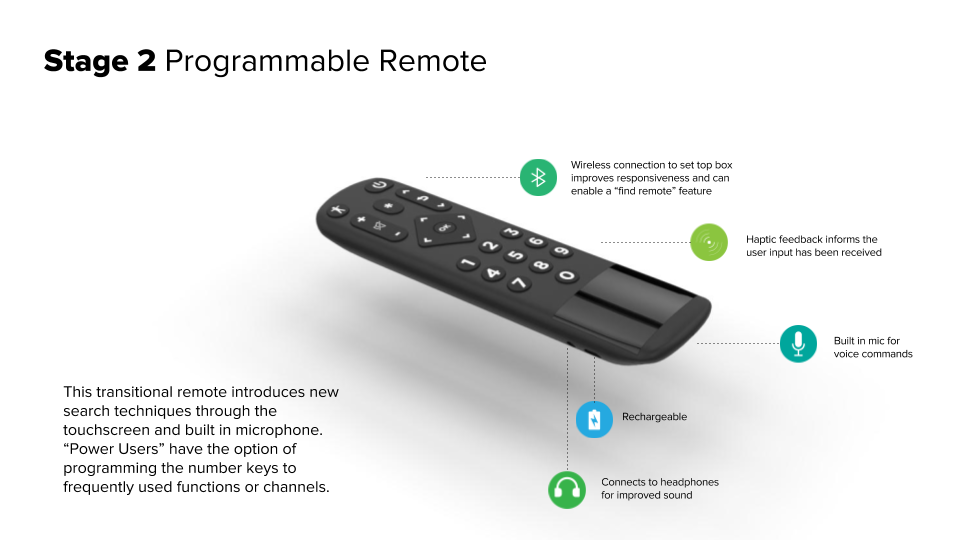NYU Ability Project worked with Charter Spectrum and NYC Media Lab to research universal design and accessibility in home entertainment.
Charter Spectrum Accessibility
2017
The Challenge
Evaluate the accessibility of Charter Spectrum’s entertainment products on their TV set-top box, Roku, iPad, Xbox, and web.
Project goals:
Humanize access issues and our research.
Consider a range of disabilities.
Model a framework for inclusive design.
Present ideas across platforms.
Address metadata issues.
Address institution-wide adoption of accessible design and development principles.
The Approach
Deliverables for this project included a white paper, an accessibility audit of Charter Spectrum’s current user interfaces and remote control, recommendations for the accessible redesign of interfaces and onboarding materials, best practices for maintaining accessible products moving forward. In addition, our team provided insight into managing metadata to better interact with screenreaders and other accessibility features.
My Role
I led the redesign of the physical interface. This involved getting user feedback in order to identify and analyze the current strengths and weaknesses. I also planned and facilitated an exercise in which prospective users built their own remote control mock-ups. Through this exercise I was able to gain information about the features they used the most and where expected to find them.
Initial Research
Competitive Analysis
We began our research by looking at accessibility efforts implemented by Charter Spectrum's competitors. Our primary focus was identifying and analyzing exemplary accessibility and onboarding features in the home entertainment industry.
Analysis of Accessibility Considerations
Before beginning the brainstorming process for our new designs, we researched ways in which applications can adapt to a variety of disabilities (e.g. vision, hearing, dexterity, and cognitive impairments). Based on this research, we identified specific elements that must be included in new Charter Spectrum applications in order to achieve the goals outlined for this project.
Remote Control Research & Prototyping
User Testing
I started by evaluating the accessibility options currently available on the set-top box
Our recommendations were informed by qualitative data we collected from 20 participants with a range of mobility, visual, auditory, and cognitive and impairments.
The Results
Claire Kearney-Volpe, Shannon Holloway, Olivia Maria Cabello Gorchs, Serena Parr, Paul Arthur Myers, Lauren Baff
























